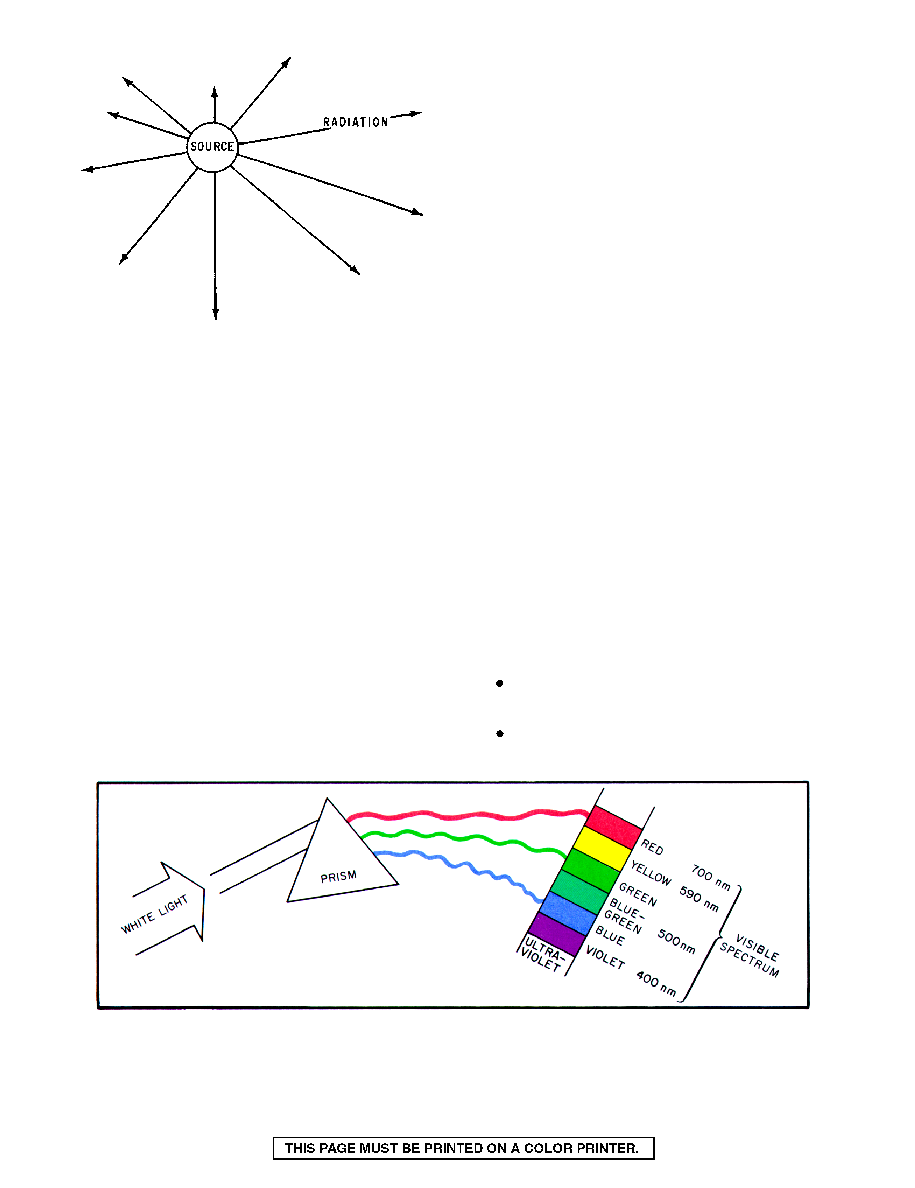
DOFMaster
for Windows
On-line
Depth of Field
Calculator
DOFMaster for Mobile Devices
On-line
Depth of Field
Table
Hyperfocal
Distance Chart
Articles
FAQ
Recommended
Books
Support
Contact
Links
Home
for Windows
On-line
Depth of Field
Calculator
DOFMaster for Mobile Devices
On-line
Depth of Field
Table
Hyperfocal
Distance Chart
Articles
FAQ
Recommended
Books
Support
Contact
Links
Home
As an Amazon Associate I earn from qualifying purchases.
![]()
by the many mediums through which it can travel.
when light travels from air into a denser but transparent
medium, such as glass, its speed is reduced. But when
it leaves the glass, it returns to its original speed. This
changing speed is important in refraction, a behavior of
light that allows lenses to form images.
from the source, its energy of light spreads out. The
greater the distance it travels, the more it spreads out
(fig. 1-4). Therefore, the amount of light reaching a
given area at a given distance is less than that reaching
the same area closer to the source. In other words, the
intensity of illumination on a surface varies when the
distance between the light source and the surface, or
of these objects; in fact color is not even inherent to light.
What you are seeing is a visual perception stimulated by
light. The apple and tree are only visible because they
reflect light from the sun, and the apple appears red and
the tree appears green because they reflect certain
particular wavelengths are seen by the human eye as red
and green. When we see a color, we are simply seeing
light of a particular wavelength.
light. When this beam of white light is passed through a
prism, its different wavelengths are spread apart and
as a band of colors, such as violet, blue, blue-green,
white light through a prism, scientists have found that
Basic Photography Course

As an Amazon Associate I earn from qualifying purchases.
WWW.DOFMASTER.COM
© 2006 Don Fleming. All rights reserved.
© 2006 Don Fleming. All rights reserved.